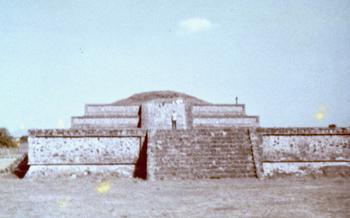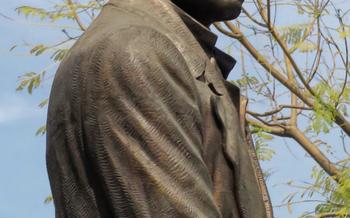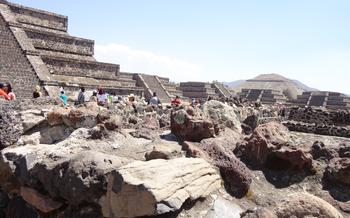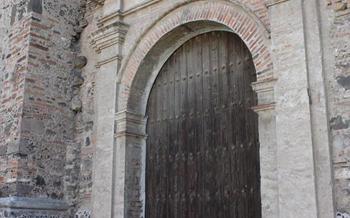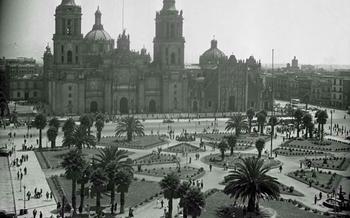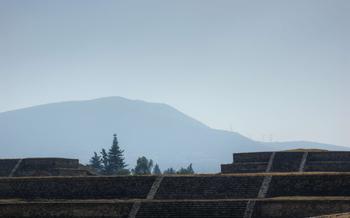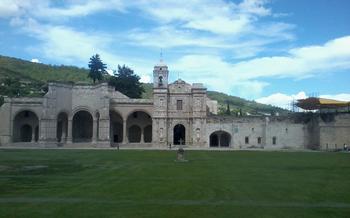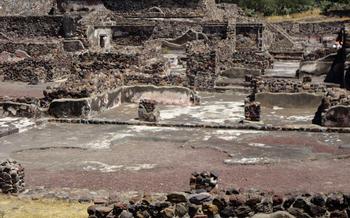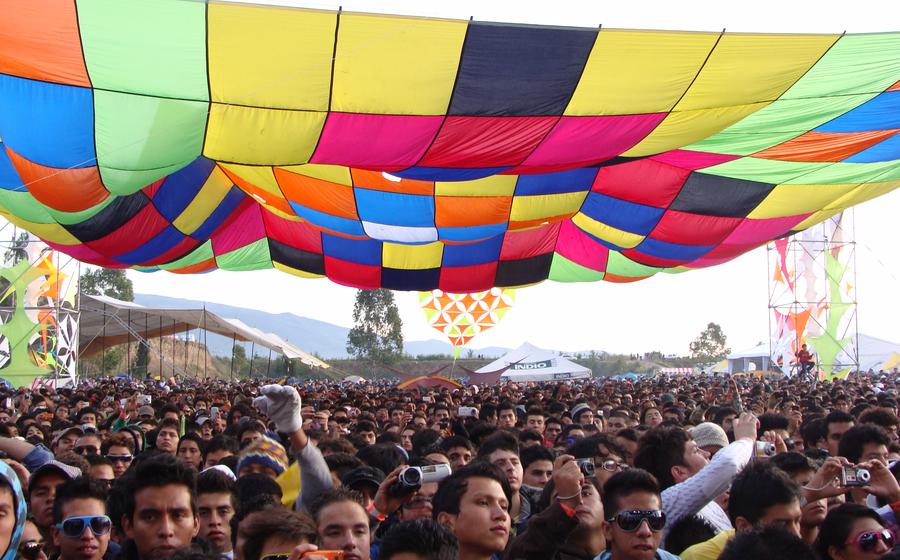
Templo de San Francisco Javier
- A Monumental Entrance
- Historical Significance
- Architectural Marvel
- A Place of Worship
- Exploring the Monastery
- A Thriving Community
- Unveiling Ancient Mysteries
- Tips for Photography Enthusiasts
- Sustainable Tourism
- Unforgettable Moments
- Local Delicacies
- Insider Tip: Uncovering the Hidden Gem of Teotihuacan
A Monumental Entrance
As you approach the Templo de San Francisco Javier, a sense of awe washes over you. Your eyes are drawn to the grand archway that marks the entrance to this magnificent structure. The arch is a testament to the architectural prowess of the era, adorned with intricate carvings and motifs that hint at the wonders that lie within. The intricate stonework depicts scenes from the Bible and the life of Saint Francis Xavier, the patron saint of the church. The archway serves as a majestic gateway, inviting you to step into a realm of spirituality and architectural mastery.
To fully appreciate the grandeur of the entrance, I recommend visiting early in the morning or late in the afternoon when the sun casts long shadows, accentuating the details of the carvings. This is also an ideal time to capture stunning photographs without the crowds. The archway is a true masterpiece, a fitting introduction to the wonders that await you inside the Templo de San Francisco Javier.
Historical Significance
The Templo de San Francisco Javier holds immense historical significance, tracing its roots back to the arrival of Franciscan missionaries in the 16th century. Initially established as a humble mission, the church played a pivotal role in spreading Christianity among the indigenous population of Teotihuacan. Over time, it evolved into a significant pilgrimage site, attracting thousands of devotees seeking spiritual solace and communion with the divine. The church's designation as a UNESCO World Heritage Site further underscores its importance in preserving Mexico's rich cultural heritage. Ongoing restoration efforts meticulously maintain the architectural integrity of this sacred edifice, ensuring its legacy endures for generations to come.
Architectural Marvel
The Templo de San Francisco Javier stands as a testament to the architectural prowess of its era, seamlessly blending Gothic, Renaissance, and Baroque elements to create a visually stunning masterpiece. Its intricate stone carvings, ornate columns, and graceful arches captivate the eye, while the interior's vaulted ceilings, stunning frescoes, and elaborate altarpieces showcase the artistic mastery of the time. The church's grandeur evokes a sense of awe and spirituality, transporting visitors to a bygone era marked by architectural brilliance. The intricate details and harmonious proportions of the Templo de San Francisco Javier serve as a reminder of the enduring legacy of Mexico's rich cultural heritage, inviting visitors to delve deeper into the country's architectural treasures.
A Place of Worship
The Templo de San Francisco Javier holds immense significance as a pilgrimage site for both Catholic and indigenous communities. Thousands of devotees flock to the church each year, particularly during the annual feast of San Francisco Javier, which takes place in October. This grand celebration draws pilgrims from across the region, who come to pay homage to the saint and seek his blessings.
During the feast, the town of Teotihuacan comes alive with a vibrant atmosphere. The church is adorned with colorful decorations, and the air fills with the sounds of music, prayer, and laughter. Pilgrims participate in processions, offer prayers, and light candles, creating a deeply spiritual and emotional ambiance.
The Templo de San Francisco Javier serves as a testament to the deep devotion and spiritual connection that pilgrims experience. It is a place where faith, tradition, and community converge, offering a glimpse into the vibrant religious practices of Mexico. Whether you are a devout Catholic, an interested traveler, or simply seeking a spiritual experience, the Templo de San Francisco Javier is a must-visit destination that will leave a lasting impression.
Exploring the Monastery
Adjacent to the Templo de San Francisco Javier lies a fascinating relic of the past, the monastery. Once home to Franciscan friars, this complex served as a center for religious education and community outreach. Step into its crumbling walls and wander through the remnants of cloisters, living quarters, and workshops, where friars engaged in various crafts.
The monastery's layout reveals the friars' simple and communal lifestyle. The cloisters, with their graceful arches and worn stone floors, once echoed with the sound of footsteps and prayers. The living quarters, though modest, provided basic necessities for the friars' daily lives. And in the workshops, they honed their skills in carpentry, weaving, and other crafts, contributing to the self-sufficiency of the mission.
Exploring the monastery's ruins is like embarking on a journey through time. Imagine the friars tending to their daily chores, tending to the needs of the community, and spreading the teachings of their faith. Their dedication and resilience left an indelible mark on Teotihuacan's history, and their legacy continues to inspire visitors to this day.
A Thriving Community
The town of Teotihuacan, nestled amidst the ancient ruins, is a vibrant and welcoming community that embraces its rich cultural heritage. Indigenous traditions, colonial architecture, and contemporary art harmoniously blend, creating a tapestry of cultural experiences. Tourism plays a vital role in the local economy, and the community actively works to preserve their cultural identity while sharing it with visitors. Engaging with the friendly locals offers a glimpse into their way of life, their pride in their heritage, and their warm hospitality. From lively markets showcasing traditional crafts to colorful festivals celebrating patron saints, Teotihuacan invites visitors to immerse themselves in its vibrant community and experience the authentic spirit of Mexico.
Unveiling Ancient Mysteries
In the heart of Mexico, just a short distance from the Templo de San Francisco Javier, lies the awe-inspiring archaeological site of Teotihuacan. Once a thriving pre-Columbian metropolis, Teotihuacan stands as a testament to the ingenuity and artistry of ancient civilizations. Its towering pyramids, majestic temples, and expansive plazas captivate visitors with their architectural grandeur and symbolic significance.
Among the most iconic structures at Teotihuacan is the Pyramid of the Sun, the largest pyramid in the Americas. Ascending its steep steps rewards visitors with breathtaking panoramic views of the ancient city and the surrounding landscape. The Pyramid of the Moon, though smaller in size, offers equally stunning vistas and is believed to have been dedicated to the goddess of water and fertility.
Strolling along the Avenue of the Dead, the main thoroughfare of Teotihuacan, one can't help but marvel at the sheer scale and symmetry of the city. Flanked by impressive platforms, temples, and residential compounds, the avenue leads to the Ciudadela, a vast ceremonial complex that once housed thousands of priests and officials.
The mysteries surrounding Teotihuacan's origins, sudden decline, and advanced knowledge of astronomy and mathematics continue to intrigue scholars and visitors alike. Ongoing archaeological research sheds light on the complex society that inhabited this ancient city, providing glimpses into their beliefs, rituals, and daily lives.
Exploring Teotihuacan is like stepping back in time, immersing oneself in the grandeur and enigma of a civilization that vanished centuries ago. Its awe-inspiring monuments and the unsolved mysteries that surround them make Teotihuacan a must-visit destination for anyone fascinated by ancient history and the enduring legacy of human achievement.
Tips for Photography Enthusiasts
As a photography enthusiast, capturing the beauty of the Templo de San Francisco Javier and Teotihuacan is a must. For the best results, plan your visit during the golden hours of sunrise or sunset, when the warm light casts a magical glow on the ancient structures. Experiment with different camera settings and lenses to capture the intricate details of the church's facade and the vast expanse of the archaeological site. Don't be afraid to explore unique angles and vantage points to create truly captivating images. Whether you're a seasoned photographer or just starting out, the Templo de San Francisco Javier and Teotihuacan offer endless opportunities for capturing stunning and memorable photographs.
Sustainable Tourism
When exploring the Templo de San Francisco Javier and Teotihuacan, embracing sustainable tourism practices is crucial. Mass tourism can strain the environment and local resources, so it's essential to minimize our impact. Here are some tips for responsible travel:
-
Reduce Waste: Avoid single-use plastics and carry a reusable water bottle to reduce plastic waste.
-
Conserve Water: Water is a precious resource, especially in arid regions. Take shorter showers, and avoid wasting water when brushing your teeth or washing your hands.
-
Support Local Businesses: Choose locally-owned restaurants, hotels, and tour operators that support the community and promote sustainable practices.
-
Respect the Environment: Stay on designated trails when exploring the archaeological site, and avoid touching or damaging ancient structures.
By practicing sustainable tourism, we can help preserve Mexico's cultural and natural heritage for future generations while supporting the local economy and community.
Unforgettable Moments
My visit to the Templo de San Francisco Javier and Teotihuacan was a journey that left an indelible mark on my soul. The awe-inspiring grandeur of the church, the mystery surrounding the ancient ruins, and the vibrant culture of the town combined to create an experience that transcended the ordinary.
One moment that stands out vividly in my memory is witnessing the annual feast of San Francisco Javier. The town was transformed into a sea of color and music as pilgrims from far and wide gathered to celebrate their patron saint. The air was filled with the scent of incense and the sound of traditional music, while the streets were adorned with vibrant decorations.
As I watched the procession of devotees carrying the statue of San Francisco Javier through the streets, I was deeply moved by the depth of their faith and devotion. The palpable spiritual energy that permeated the atmosphere was truly awe-inspiring.
Another unforgettable moment was exploring the archaeological site of Teotihuacan at sunrise. As the first rays of light illuminated the ancient pyramids, I felt a profound connection to the past. The silence of the morning, broken only by the chirping of birds, allowed me to fully appreciate the majesty and mystery of this ancient city.
Standing atop the Pyramid of the Sun, overlooking the vast expanse of Teotihuacan, I couldn't help but marvel at the ingenuity and craftsmanship of its builders. The intricate details and symbolic significance of the pyramids left me with a profound sense of wonder and admiration.
These are just a few of the unforgettable moments that made my journey to the Templo de San Francisco Javier and Teotihuacan so special. It was an experience that not only enriched my knowledge of Mexican history and culture but also left an imprint on my heart that will last a lifetime.
Local Delicacies
Teotihuacan's culinary scene is a testament to the region's rich cultural heritage, offering a tantalizing blend of pre-Columbian and colonial influences. Among the must-try dishes is barbacoa, a traditional slow-cooked meat dish that originated from the indigenous barbacoa pits. Savor the tender, smoky flavors of barbacoa, often served with fresh tortillas, salsa, and guacamole.
Another local delicacy is pulque, a fermented beverage made from the sap of the maguey plant. With its milky appearance and slightly sour taste, pulque holds a special place in Mexican culture and is often enjoyed as a refreshing drink or used in traditional rituals.
For a truly unique experience, try escamoles, a delicacy made from ant eggs. These nutrient-rich eggs are sautéed with butter, onions, and spices, resulting in a flavorful and highly prized dish.
To immerse yourself in the local culinary culture, visit the traditional markets or food stalls in Teotihuacan. Here, you can sample a variety of regional specialties, interact with friendly vendors, and support the local economy. Don't miss the opportunity to savor the unique flavors and culinary traditions that make Teotihuacan a foodie's paradise.
Insider Tip: Uncovering the Hidden Gem of Teotihuacan
Beyond the renowned Templo de San Francisco Javier and the awe-inspiring archaeological site, Teotihuacan holds a secret gem that few tourists know about: the subterranean tunnels beneath the Pyramid of the Sun. These hidden passageways offer a unique and unforgettable experience, allowing visitors to delve into the heart of this ancient metropolis.
Descend into the darkness and embark on a journey through time, exploring the intricate tunnels that were once used for ceremonial purposes. As you navigate the underground labyrinth, marvel at the ancient stone carvings and artifacts that adorn the walls, providing a glimpse into the rituals and beliefs of Teotihuacan's inhabitants.
This exclusive experience is limited to small groups and requires advance booking, ensuring an intimate and immersive encounter with Teotihuacan's hidden wonders. Don't miss this opportunity to uncover the secrets that lie beneath the surface of this extraordinary ancient city.

